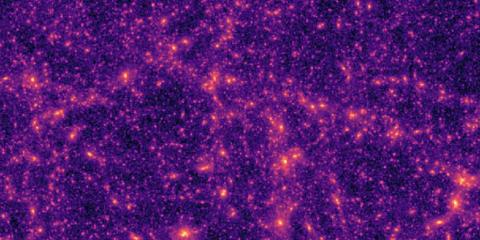
Dark matter pulls the universe together and dark energy causes it to expand faster, which is why cosmologists want to know exactly how much of those two is out there, according to the Federal Institute of Technology (ETH) in Zurich.
ETH Zurich researchers have now turned to artificial intelligence to improve on standard methods for estimating the dark matter content of the universe. They used innovative machine learning algorithms that have a lot in common with those used for facial recognition by Facebook and other social media.
Although there are no faces to be recognized in pictures take of the night sky, cosmologists still look for something rather similar, explains ETH research Tomasz Kacprzak. "Facebook uses its algorithms to find eyes, mouths or ears in images; we use ours to look for the tell-tale signs of dark matter and dark energy."
Using machine learning tools, the researchers programmed computers to teach themselves how to extract the relevant information from maps of the universe. The results show that the neural networks came up with values that were 30% more accurate than those obtained by traditional methods based on human-made statistical analysis.
“This is the first time such machine learning tools have been used in this context,” said ETH research Janis Fluri. "We believe that this usage of machine learning in cosmology will have many future applications.”
Related news
Contact us
Can we put you in touch with a peer company or research institute? Do you need any information regarding your strategic expansion to Switzerland's technology and business center?
info@greaterzuricharea.com